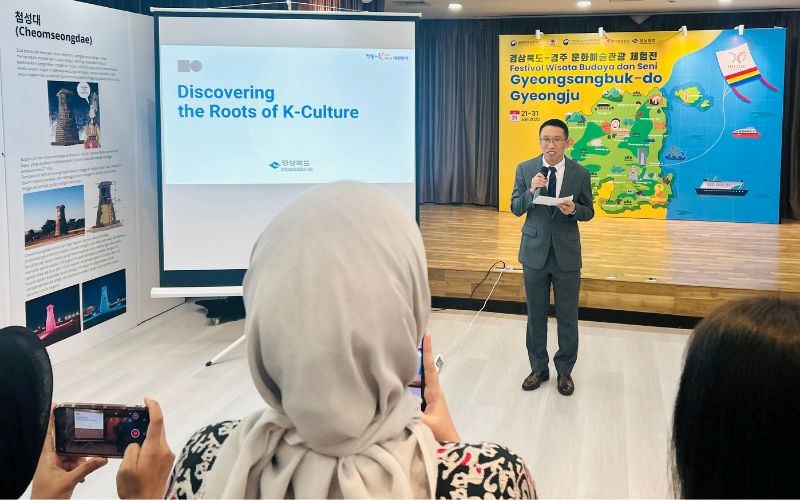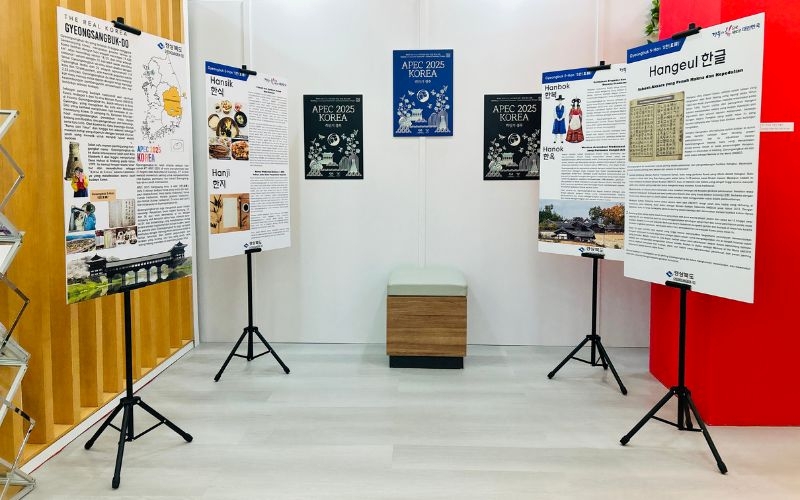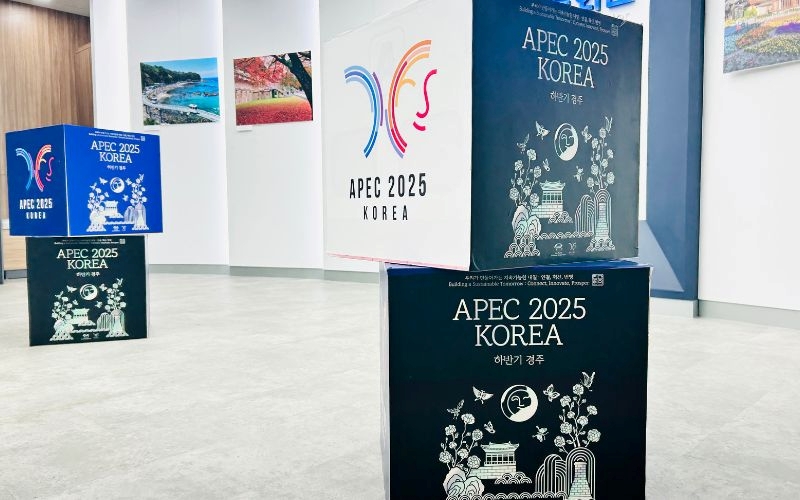- 한국어
- English
- 日本語
- 中文
- العربية
- Español
- Français
- Deutsch
- Pусский
- Tiếng Việt
- Indonesian
By Honorary Reporter Hanum Nur Aprilia from Indonesia
Photos = Hanum Nur Aprilia
Celebrating the province's role as host of this year's Asia-Pacific Economic Cooperation Summit, the event spotlighted the five H's of Korean culture: Hansik (traditional cuisine), Hanji (traditional paper), Hanok (traditional architecture), Hangeul (alphabet) and Hanbok (traditional clothes).
At the opening ceremony, a representative from the province's office in Jakarta gave a presentation on how the five elements form the foundation of Korea’s cultural identity, with historical origins deeply tied to the province. The event showed Gyeongsangbuk-do not only as a guardian of traditions but also a dynamic region that reflects cultural heritage in modern life.

A representative from Gyeongsangbuk-do's office in Jakarta on July 21 gives a presentation on the five H's of Korean culture at the festival's opening ceremony at the KCC in Jakarta.
Among the five H's, Hansik reflects centuries of culinary practice in the province's cities of Andong and Yeongju, home to the Eumsik Dimibang (Understanding the Taste of Food), Korea's earliest cookbook written by a woman. Regional traditions such as foods used in ancestral rites and fermentation methods have shaped the province's gastronomic identity.
Hanji, or traditional paper made from mulberry bark grown in Gyeongsangbuk-do, has earned global recognition for its durability and craftsmanship. It has been used in restoration projects at the Louvre and UNESCO recognizes its as Intangible Cultural Heritage.

Information on the five H's of Korean culture at the KCC in Indonesia show why these traditions remain important.
Traditional Hanok houses are mostly in the province in villages like Hahoe and Yangdong. They reflect centuries of Confucian values and architectural mastery.
Hangeul also has historic ties to Gyeongsangbuk-do. Manuscripts such as the UNESCO-designated Haerye edition of the alphabet's textbook Hunminjeongeum (The Proper Sounds for the Instruction of the People) were written and preserved in Gyeongsangbuk-do.
Finally, Hanbok is known to be rooted in the province's cities of Andong and Sangju. The Korean Hanbok Advancement Center in Sangju seeks to preserve and modernize the craft.

Gyeongju, Gyeongsangbuk-do Province, is gearing up to host the APEC Summit from late October.
msjeon22@korea.kr
*This article is written by a Korea.net Honorary Reporter. Our group of Honorary Reporters are from all around the world, and they share with Korea.net their love and passion for all things Korean.